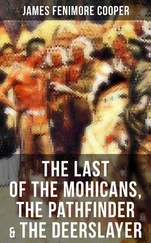Lars Brownworth - Lost to the West - The Forgotten Byzantine Empire That Rescued Western Civilization
Здесь есть возможность читать онлайн «Lars Brownworth - Lost to the West - The Forgotten Byzantine Empire That Rescued Western Civilization» весь текст электронной книги совершенно бесплатно (целиком полную версию без сокращений). В некоторых случаях можно слушать аудио, скачать через торрент в формате fb2 и присутствует краткое содержание. Год выпуска: 2010, ISBN: 2010, Издательство: Random House, Inc., Жанр: Старинная литература, на английском языке. Описание произведения, (предисловие) а так же отзывы посетителей доступны на портале библиотеки ЛибКат.
- Название:Lost to the West: The Forgotten Byzantine Empire That Rescued Western Civilization
- Автор:
- Издательство:Random House, Inc.
- Жанр:
- Год:2010
- ISBN:9780307407962
- Рейтинг книги:3 / 5. Голосов: 1
-
Избранное:Добавить в избранное
- Отзывы:
-
Ваша оценка:
- 60
- 1
- 2
- 3
- 4
- 5
Lost to the West: The Forgotten Byzantine Empire That Rescued Western Civilization: краткое содержание, описание и аннотация
Предлагаем к чтению аннотацию, описание, краткое содержание или предисловие (зависит от того, что написал сам автор книги «Lost to the West: The Forgotten Byzantine Empire That Rescued Western Civilization»). Если вы не нашли необходимую информацию о книге — напишите в комментариях, мы постараемся отыскать её.
Lost to the West: The Forgotten Byzantine Empire That Rescued Western Civilization — читать онлайн бесплатно полную книгу (весь текст) целиком
Ниже представлен текст книги, разбитый по страницам. Система сохранения места последней прочитанной страницы, позволяет с удобством читать онлайн бесплатно книгу «Lost to the West: The Forgotten Byzantine Empire That Rescued Western Civilization», без необходимости каждый раз заново искать на чём Вы остановились. Поставьте закладку, и сможете в любой момент перейти на страницу, на которой закончили чтение.
Интервал:
Закладка:
At the turn of the century, he crossed into Ottoman territory, bringing the enraged sultan speeding from his siege of Constantinople. When the two armies met outside of Ankara on July 20, 1402, the carnage was terrible. Fifteen thousand Turks fell, and the sultan himself was captured. Timur the Lame cheerfully took possession of Bayezid’s harem and, according to some accounts, used the sultan as a footstool, carrying him before the army in an iron cage. *The Mongol warlord was now the master of Asia Minor, but he was restless and more interested in conquest than administration. After a few more outrages—he sacked Philadelphia and built a wall of corpses to commemorate it—he withdrew to invade China, leaving a shattered Ottoman Empire and a chaotic Anatolia in his wake.
Now was the moment to drive the Turks out of Europe, but as usual Manuel II could find many vague promises but no actual help to accomplish it. Whatever chance there was to turn the tide passed by forever the moment the new sultan arrived in Adrianople. Bayezid’s son Süleyman had survived the devastating Mongol attack, and he slipped across the Bosporus to take possession of the European provinces while his brothers fought it out in Asia Minor. Skillfully neutralizing his Christian neighbors by granting Venice and Genoa trade concessions, Süleyman contacted the Byzantine emperor and offered extraordinary terms. Manuel II was, of course, to be released immediately from the humiliation of vassalage; Thrace and Thessalonica were instantly returned to the empire, along with the monastic community of Mount Athos; and, as the final pièce de résistance, Süleyman offered to become Manuel’s vassal.
On the warm afternoon of June 9, 1403, Manuel II entered triumphantly into Constantinople. He had left as the servant of the sultan and against all conceivable odds had returned the master. Crowds cheered him as he walked down the streets, church bells rang out jubilantly throughout the city, and a special service of thanksgiving was held in the Hagia Sophia. Despite Süleyman’s subservient posturing, however, the Ottoman sultan had the better end of the bargain. With a few gulps of swallowed pride, he had gained a valuable respite. Byzantium was as weak as ever, and its newfound prestige was merely an illusion. A concerted effort by Christendom just might have been able to push the Turks out of Europe while they were still fragmented, but the Ottoman willingness to come to terms had lulled the European powers into a false sense of security. Convinced that the threat had been overblown, they turned their attentions elsewhere and left Byzantium terribly alone. It would’ve been better for the empire by far if Manuel had rejected Süleyman’s terms.
The respite from Ottoman aggression was all too brief. In 1409, Süleyman’s brother Musa crossed into his territory and besieged the city of Adrianople. Manuel II gave what aid he could to his vassal, but, after a brief struggle, Musa captured the city and strangled Süleyman. By 1411, the new sultan was at the walls of Constantinople, determined to punish the emperor for supporting the wrong side, and Manuel was only able to rescue the situation by encouraging Mehmed—a third brother—to overthrow Musa. The siege was lifted and Musa succumbed in his turn to the bowstring, but once again Constantinople was subject to the Ottoman whim.
Fortunately for the empire, the cultured, sophisticated new sultan took an instant liking to Manuel, even referring to him as “my father and overlord,” and loyally kept the peace. The emperor took advantage of the lull to shore up the imperial defenses, taking a tour of Byzantine territory, and building a six-mile-long wall across the Isthmus of Corinth—the Hexamilion—to cut off access to the Peloponnese. He remained on excellent terms with his Turkish counterpart, but the truce with Islam, Manuel II well knew, could never last for long, and sooner or later an Ottoman army would once again be at the gates. *
The invasion came sooner than the emperor expected. In 1421, the thirty-two-year-old Mehmed suddenly died, leaving his violent, unstable seventeen-year-old son Murad II as sultan. Such times of transition were inevitably chaotic, with rival claimants trying to seize power, and Constantinople was faced with the opportunity to support a usurper. Manuel II, now in his seventies and increasingly feeling his age, preferred to leave the Ottomans to sort it out and not risk antagonizing the eventual victor. His eldest son, John VIII, however, with all the confidence of youth, wanted to take a more aggressive stance and support a pretender. In the end, the weary emperor gave in, imperial support was thrown behind Murad’s cousin Mustafa, and the Byzantines held their breath.
Manuel II had been wise to hesitate in risking the empire’s neutrality. Mustafa was trapped by his cousin in Gallipoli and strangled, and Murad furiously turned on Byzantium. Thessalonica was put under siege, the Hexamilion was demolished, and the Peloponnese was raided. By 1422, Murad was at the walls of Constantinople, demanding the city’s immediate surrender. Manuel II was near death, but he had one final gift for his capital. Sending ambassadors to the sultan’s youngest brother, the emperor convinced him that the time was right to make a bid for the throne. The annoyed sultan had no choice but to immediately deal with the threat. In exchange for a promise by the emperor to once again become a Turkish vassal, the siege was hastily lifted, and Murad raced to Asia Minor. Somehow Manuel II had successfully avoided extinction. Alone in a Turkish sea, the situation was no better now than it had been at the time of his coronation, but thanks to his ingenuity and cleverness, Constantinople had been saved. Manuel II could expire with his empire—however tenuously—at peace.
It didn’t stay so for long. Manuel’s oldest son, John VIII, was barely crowned before Sultan Murad II decided to besiege the city of Thessalonica. The hard-pressed Byzantine commander turned over the city to Venice in exchange for its protection, but in 1430 the Venetian governor decided the situation was beyond saving and calmly sailed away, wishing the defenders the best of luck. The hapless Byzantines managed to hold out until March, but the walls were finally breached and the Turks poured in, committing the usual atrocities.
Convinced that Constantinople would be next, John VIII left for the familiar attempt to drum up support in Europe, confident in his abilities to succeed where his predecessors had failed. The Turkish threat, he was quite sure, was now plain for anyone to see, and the West would certainly be motivated out of fear, if not altruism. Like his father and grandfather before him, however, John found that Europe was caught up in its own struggles and quite blind to any larger danger. England and France were locked in the Hundred Years War—Joan of Arc had been captured and burned by the English that same year—and everywhere else John went he received the same tired old response. Byzantium could receive no aid until the Orthodox Church submitted to Rome.
John VIII knew full well that his subjects would never accept such a thing, but he was desperate and promised the pope that he could convert the empire to Catholicism. The pontiff didn’t quite believe him—he’d heard that promise too many times before—but the emperor was determined. After fourteen years of tortuous negotiations and diplomatic maneuvering, he gathered a group of intimidated eastern bishops and signed the decree of union at a council at Florence, officially joining the churches. The pope instantly promised armed help, and Hungary, well aware that it was the next nation on the Ottoman chopping block, agreed to lead the Crusade.
It was one thing to sign a document, however, and quite another to enforce it. John returned to his capital to find his actions universally condemned and his own position on the throne seriously undermined. Most of those who had signed the hated decree publicly retracted their signatures; the patriarchs of Alexandria, Jerusalem, and Antioch furiously repudiated it; and one of the emperor’s brothers tried to seize the throne in the name of Orthodoxy.
Читать дальшеИнтервал:
Закладка:
Похожие книги на «Lost to the West: The Forgotten Byzantine Empire That Rescued Western Civilization»
Представляем Вашему вниманию похожие книги на «Lost to the West: The Forgotten Byzantine Empire That Rescued Western Civilization» списком для выбора. Мы отобрали схожую по названию и смыслу литературу в надежде предоставить читателям больше вариантов отыскать новые, интересные, ещё непрочитанные произведения.
Обсуждение, отзывы о книге «Lost to the West: The Forgotten Byzantine Empire That Rescued Western Civilization» и просто собственные мнения читателей. Оставьте ваши комментарии, напишите, что Вы думаете о произведении, его смысле или главных героях. Укажите что конкретно понравилось, а что нет, и почему Вы так считаете.












